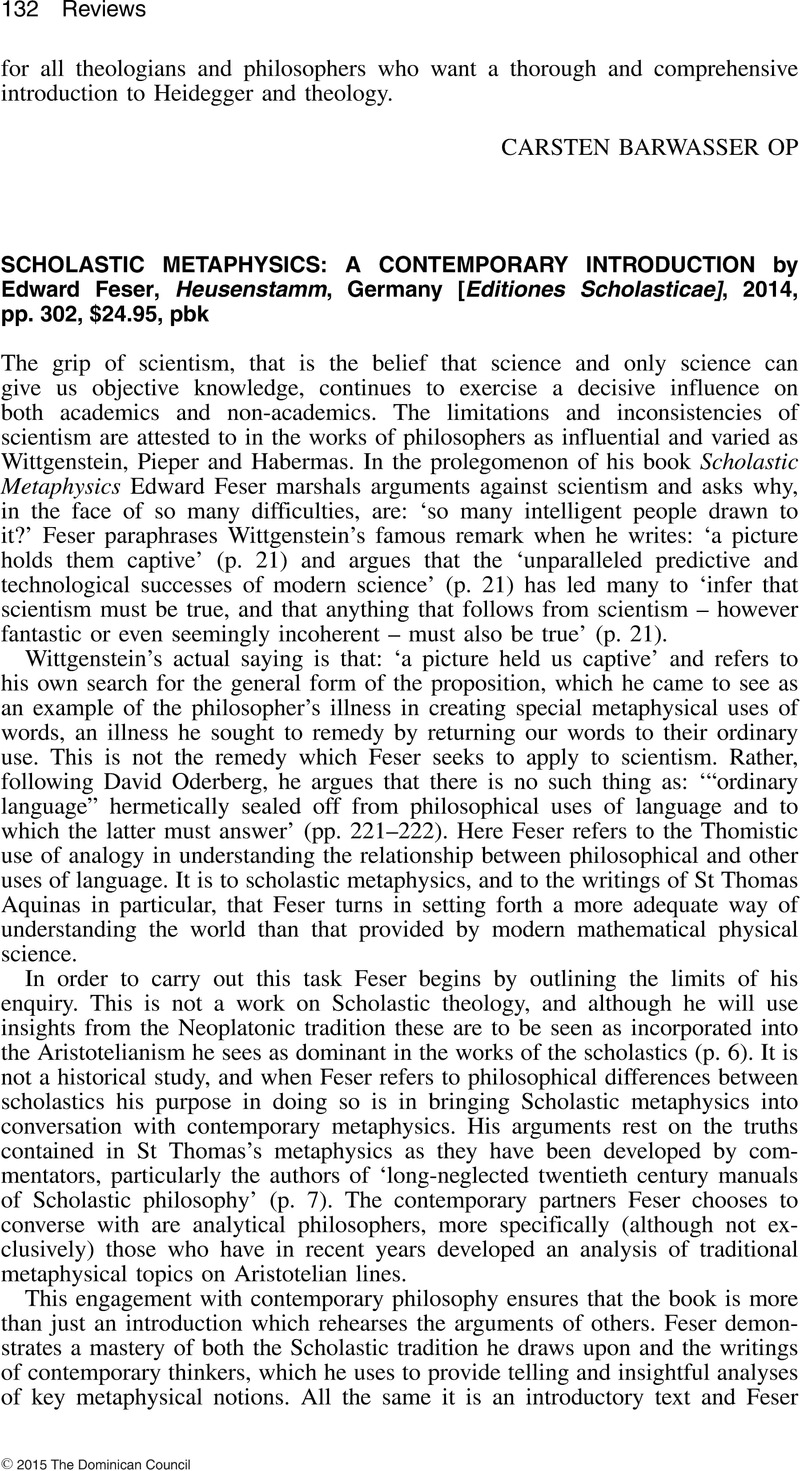No CrossRef data available.
Article contents
Scholastic Metaphysics: A Contemporary Introduction by Edward Feser, Heusenstamm, Germany [Editiones Scholasticae], 2014, pp. 302, $24.95, pbk
Review products
Scholastic Metaphysics: A Contemporary Introduction by Edward Feser, Heusenstamm, Germany [Editiones Scholasticae], 2014, pp. 302, $24.95, pbk
Published online by Cambridge University Press: 01 January 2024
Abstract
An abstract is not available for this content so a preview has been provided. Please use the Get access link above for information on how to access this content.

Information
- Type
- Reviews
- Information
- Copyright
- Copyright © 2015 The Dominican Council. Published by John Wiley & Sons Ltd

